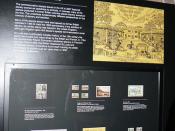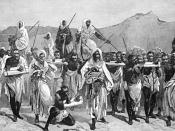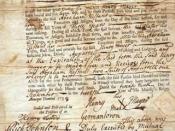The seventeenth century Caribbean can be described as a time of transience and disaster as well as fortune and growth. The English occupancy of this region increased during this century, geographically and in terms of trade. Economically, the Caribbean was looked upon as the "gem of the crown" after the introduction of the sugar crop in the 1640's. The sugar phenomenon generated the need for slave labour in the form of African slave import and that of indentured servants. The condition of the white indentured servant in comparison with that of the black slave in the seventeenth-century Caribbean is an interesting situation that can be seen in terms of what the Planters had to gain from each group of labourers and how expendable they were considered to be. The issue of freedom and its implications is a central one in this contrast as it is the fundamental dividing factor between white and black.
Whereas indentureds were "guaranteed" freedom and an opportunity to own land once they term of servitude was over, African slaves were given no such promise or hope of establishing themselves as anything other than servants of the plantation owners. Theoretically and morally, one could deduce from this that the conditions experienced by white indentured servants would always surpass those of the African slaves who were bought to serve for life. This however was not the rule as freedom was not always granted to white indentureds, and their temporary status contributed in the end to their day to day treatment being sub-par in relation to that of the African slaves for the most part. In terms of freedom within their condition of unpaid slave labour, the African slaves enjoyed greater room for social, cultural and commercial development than the white indentured slaves in the...


